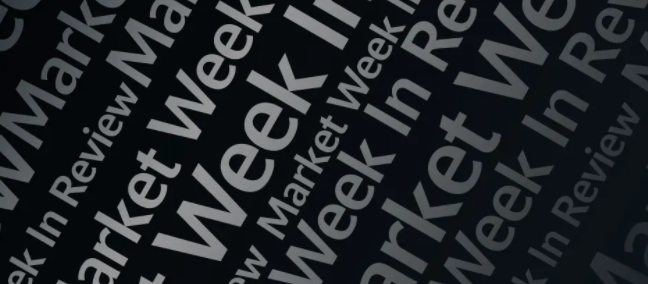Key Takeaways From April’s U.S. Inflation Report

Video Length: 00:08:08
On the latest edition of Market Week in Review, Investment Strategy Analyst BeiChen Lin and Sophie Antal-Gilbert, Head of AIS Portfolio & Business Consulting, discussed the recent rate hike by the Bank of England (BoE). They also chatted about the latest U.S. inflation numbers and provided an update on the potential for a U.S. recession.
BoE lifts rates, no longer anticipates recession this year
Antal-Gilbert and Lin opened the conversation by covering the highlights of the BoE’s May 11 policy meeting, including the decision to lift borrowing costs by 25 basis points (bps) to 4.5%. Lin noted that while the days of larger rate hikes—to the tune of 50 or 75 bps—are in the past, the BoE’s latest rate increase still takes the policy rate deeper into restrictive territory. “The higher interest rates climb, the more the risk of inadvertently tipping the economy into a recession grows,” he remarked, noting that central banks like the BoE will likely be proceeding more cautiously with rate hikes moving forward. That said, taming inflation—and not warding off a recession—is still the number-one priority of central banks, Lin added.
For the UK, the path of future monetary policy will really depend on the latest data, he stated, noting that this can be especially tricky since most data comes with a lag. In addition, alterations to monetary policy also work with a lag, Lin said. Amid this backdrop, the BoE also announced a revision to its economic outlook at the May 11 meeting, Lin said, with bank officials noting they no longer anticipate a recession this year. However, the BoE still expects subdued economic growth by historical standards in 2023, he added.
U.S. April inflation matches consensus expectations
Shifting to the U.S., Lin said that the Labor Department’s consumer price index (CPI) rose by 0.4% in April on a month-over-month basis, which was fairly in line with consensus expectations. Peering further into the data, he said there was a bit of an increase in durable goods inflation last month—most of which was centered around a rise in used car prices. “One month doesn’t make for a trend, but this will be an important watchpoint to monitor,” he stated.
In addition, the report showed that shelter costs—although off their earlier peak—still remain somewhat elevated, he said. Moreover, inflation in wage-sensitive sectors—such as core services excluding medical, shelter, and transportation—is also proving to be a bit sticky, Lin noted.
Speaking of wage pressures, he said that the latest data from the Atlanta Fed’s wage tracker shows that U.S. wage pressures are still sticking around, with wage growth running a little above 6% on a smoothed basis. “This is still way above a level that would be consistent with the Fed’s inflation target. This means that the Fed will need to keep monetary policy at a restrictive setting long enough to bring demand and supply in the labor market back into balance,” he said.
As for the Fed’s next steps, Lin noted that officials hinted strongly at their May 2-3 meeting that they could pause rate increases in June. Given that the U.S. central bank has already lifted borrowing costs by over 500 basis points since March of 2022, the bar for raising rates further is probably quite high, he said.
However, this doesn’t mean that Fed officials have ruled out the possibility of tightening again, Lin explained. “If inflation continues to remain elevated, I think that Chair Jerome Powell will do what needs to be done to bring inflation back under control,” he said.
Recession watch: When could the next U.S. recession strike?
Antal-Gilbert and Lin wrapped up the segment with a look at the chances for a U.S. recession. Lin said that he still expects a mild to moderate recession in the next 12 to 18 months, acknowledging that such an outlook may seem at odds with the performance of the benchmark S&P 500® Index, which is up about 7% on the year.
Using the analogy of a plane coming in for a landing may help explain Russell Investments’ outlook better, he said. “As a plane approaches an airport, the magnitude of the approach—steep or shallow—really depends on the type of airport the plane is landing at. But no matter the approach, at some point the plane’s speed will slow down and it will lose altitude. Similarly, the U.S. economy is starting to show signs of slowing down—with ISM manufacturing in contractionary territory and temporary-help employment already peaking,” Lin explained.
The good news, however, is that a combination of manageable consumer debt levels and more stringent lending standards enacted after the 2008 global financial crisis should keep the recession on the mild to moderate side, he said. Ahead of a potential economic downturn, there’s no reason for investors to panic, he added. “Ultimately, in times of uncertainty, we believe it’s best for investors to stay disciplined and stick to their strategic beliefs,” Lin concluded.
More By This Author:
What Investors Need To Know As The U.S. Debt Ceiling Deadline Approaches
The Fed Vs. The ECB: Which Central Bank Is Likely To Pause Rate Increases First?
May Fed Meeting: Hike And Watch
Disclosure: These views are subject to change at any time based upon market or other conditions and are current as of the date at the top of the page. The information, analysis, and opinions ...
more


